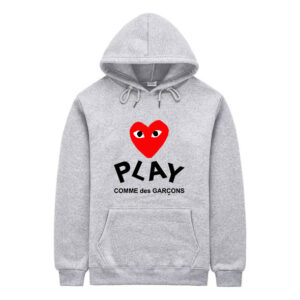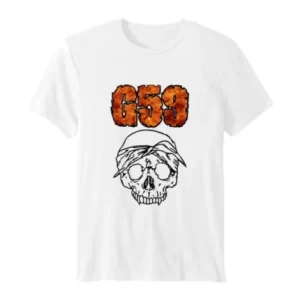Customary patches go beyond simply decorative patches sewn on clothes. They’re powerful symbolisms of history, identity, and pride. When worn on jackets bags, or even uniforms the patches tell tales of the past. The process of designing your own patch can be an effective way to honor your culture and heritage, as well as give it to the world.
In this article it will teach you to make Customary Patches to celebrate your cultural heritage with simple steps, innovative ideas, and also the artwork of embroidery.
1. Understand the Meaning Behind Your Heritage
Before beginning your design make sure you look at the roots of your design. Ask questions like:
-
What are the symbolic symbols of patterns, colors, or patterns that symbolize the culture of your country?
-
Are there any particular species of animals, plants or items that have significance in the context of culture?
-
What languages, expressions or scripts did your ancestral ancestors speak?
Knowing the background of your family will assist in incorporating meaningful components in the design. A person, for instance, who comes from the Celtic background may incorporate spirals or knots, while someone who has Native American roots might incorporate feathers, or even sacred animals.
2. Research Traditional Embroidery Styles
The embroidery is the core of many patch designs that are customary. Every culture uses its own distinct stitching technique. If you study these techniques it is possible to give the traditional look to your embroidery.
Some examples include:
-
Mexico Otomi embroidery with colorful and beautiful floral designs
-
Indian Zardozi embroidery Rich gold threads and beads
-
Japanese Sashiko embroidery Simple stitch patterns in white thread, on Indigo fabric
Select an embroidery design that is a reflection of your past or blend styles to show an array of backgrounds.
3. Keep the Design Simple Yet Symbolic
In designing Customary Patches, remember that patches are very small, and should be readable even at the distance. Unorganized designs can be lost in its significance.
Here are some tips to design your layout effectively:
-
Make use of three primary elements to prevent overcrowding
-
Use bold, contrast shades for more performance
-
Pick shapes such as circles, diamonds, shields or even diamonds, which work great for layouts of patches
Imagine a patch as the mini flag. It must be easily identifiable as well as full of meaning.
4. Choose Colors That Tell a Story
The colors can be a representation of emotions and beliefs or even regions. Make use of them to convey your personality.
Example:
-
Red can mean determination, strength or even the idea of revolution
-
Green may be a symbol of peace, land, or the natural world.
-
Blue can symbolize commitment, loyalty, sky or devotion to God.
In several African culture, certain colors carry particular implications. For instance, in Asian culture, gold typically represents wealth and prosperity. Find out what the meaning of each color is in your society and incorporate the meaning in the design of your patch.
5. Include Text in Your Native Language or Script
Incorporating words, dates or words can add a patch an individual accent. Utilizing your own language or your family’s name can add the authenticity and confidence.
You might consider:
-
A family motto or a cultural proverb
-
The village’s name is a reference to a tribe or tribe
-
Important day in your family’s or in the cultural heritage
Be sure that the font is legible and fits with the style. The text should be concise and powerful.
6. Work With a Patch-Making Expert
When your design is complete and you’re ready to present your vision to reality. That’s the point where Customized Patches will be able to assist you. We are experts in making high-quality embroidery patches, we are aware of the significance of culture and the tradition in every stitch.
Customary Patches can provide custom design solutions, professional stitching techniques and different dimensions and designs. It doesn’t matter if it’s for the family reunion, a culture event, or private collection, we’ll help make your dream an everlasting image of joy.
7. Use Your Patch With Purpose
Once you’ve designed an amazing patch, you need to think about the ways you can use the patch. Below are some creative concepts:
-
It can be sewn onto jackets, backpacks or even hats
-
It can be framed as a part of the decor in your home
-
Make it a gift to your family members
-
Utilize it in performance or cultural occasions.
The patches aren’t big, however they are able to make a huge message. When people look at the patch on your body, it could initiate conversations about your identity or history as well as values.
8. Preserve Your Culture Through Fashion
The fashion industry is among the best methods of expressing your identity. If you’re wearing a badge with your ethnicity and culture, you’re letting the world know about who you are as well as your origins.
Customized patches allow you to blend modernity with tradition. The embroidering, color and designs make every item distinct. If you’re making patches for your community project at school, a group of students or even for your personal use the fashion of embroidery brings individuals to one another.
The process of designing a patch isn’t only about fashion. It’s about protecting culture while honoring family members and being confident in your own identity.
FAQs
1. What is a customary patch customary patches?
They are hand-embroidered or manufactured badges of fabrics that express families, culture, or the traditional character of a person. These patches often have meaningful designs, symbols, or colors. styles.
2. How do I select the appropriate style to use on my patch?
Begin with learning more about your history. Select colors, symbols, and designs that are representative of your culture.
3. Can I create a patch using multiple cultural elements?
Yes! Many people have mixed heritage and create patches that blend symbols from different cultures to tell their unique story.
4. What materials are best for embroidery patches?
Cotton, felt, and twill are commonly used. The embroidery thread should be durable and colorfast to keep the design vibrant over time.
5. What is the best way to apply the patch on clothes?
Patches made to order can be ironed, sewn or pressed on with Velcro depending on the type of backing you pick.





